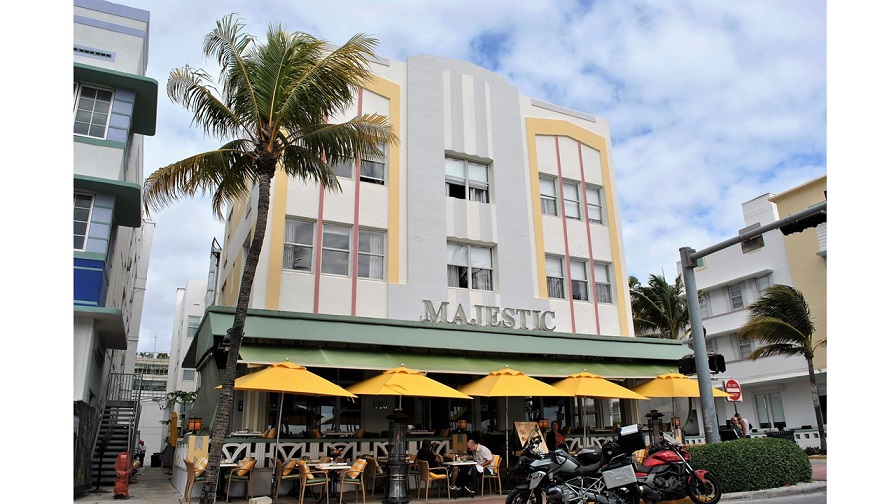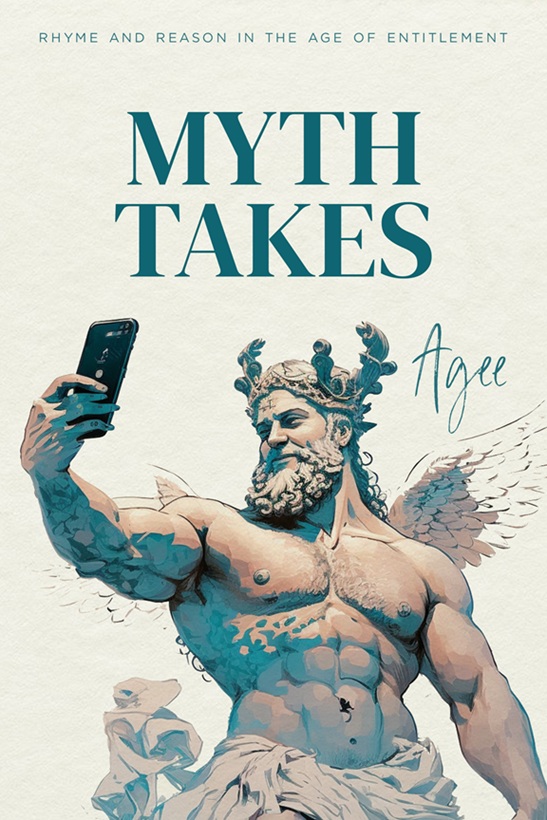.
Key West
Rum, reeling, raunchiness, and revelry,
Palms, poincianas, palaces of old—
All lie behind; the Morro Castle’s hold
Guards old Havana past the sparkling sea
A half-day’s sail south from this furthest Key;
A torrid gap that spans a war still cold,
An ocean’s breadth between two worlds—I’m told—
The gulf from liberty to tyranny.
And yet . . . that gap of worlds grows narrower
Than those this side admit, still narrowing
As their land rushes to look like the other,
Where now a word, a question can incur
Chastisement, and no private act or thing
Escapes the leer that craves to crush and smother.
.
.
Key Largo
Time forgot you, sleepy isle—
Or lingers on your sun-drenched shores,
Paused for relaxation while
Elsewhere it runs out its course.
Here there is but present—still,
Unrushed; each long and languid day
Melts into the next until
Bygone decades seem to stay.
Who can fault time’s wish to tarry
Along these coasts and tropic seas,
Where the sultry sunbeams marry
Cooling salt-sprays in the breeze?
.
.
South Beach Deco
Simple, streamlined, sleek;
_Sheer gem-cut elegance of curves and lines;
__Marriage of classical and bold designs;
Turquoise, yellow, pink,
_Orange, white—gleaming in the tropic sun,
__And lit at night with neon hues that stun.
Anachronistic place,
_Proud relict of that bygone time when all
__Seemed new and futures dreamt could still enthrall,
That saw new creeds replace
_The former world as its self-trusting heirs
__Built upward, poised to make the future theirs.
Their works became antiques,
_Mere curios admired from far away
__As quaint museum pieces on display,
Yet still with charm that piques
_The same imagination that dared build
__This once-intrepid beauty, too soon killed.
The age that built this scene,
_Of style and that refinement it called “class,”
__Soon faded as an age of steel and glass
Rejected what had been,
_While shorn of vision, will, and energy—
__Our age of nihilism and ennui.
Bright-hued sepulchers,
_Silent amid the wild, carousing fray;
__Cenotaphs to an age fled fast away—
But their presence stirs
_A sense of longing for the art and will
__That built them and may linger somewhere still.
.
.
Adam Sedia (b. 1984) lives in his native Northwest Indiana and practices law as a civil and appellate litigator. In addition to the Society’s publications, his poems and prose works have appeared in The Chained Muse Review, Indiana Voice Journal, and other literary journals. He is also a composer, and his musical works may be heard on his YouTube channel.















Adam, I’m guessing, but it seems that you have spent your vacation this year in Florida.
These are three lovely poems of nostalgia and remembrance. The first summons up memories of old Key West, and of the time when there was a real difference between America and the Communist cesspool of Cuba. The sonnet’s sestet is really troubling.
The second one on Key Largo serves as a counterpoint — on this small key, time seems to have stood still, and all things remain as they were, drenched in tropical beauty.
The third on South Beach is a much more complex poem. There is nostalgia for the past, as recognized by its surviving architecture and curios, but with a deeper recognition that South Beach was once new and trendy and avant garde. And the older impulse that built and decorated the place has now given way to nihilistic “steel and glass.” The older relics now seem like “cenotaphs” and “sepulchers.”
This raises the troubling question: Was the earlier Art Deco impulse any different from the newer inhuman glass and steel, or are they both simply passing fads? Or, as Adam suggests at the poem’s close, is there some enduring aesthetic impulse that survives in us, and that can summon up the craftsmanship and willpower to create beautiful things once more?
These questions are not just about architecture, but about all the arts — and poetry in particular.
P.S. The alliteration in the first two lines of “Key West” is fantastic!
I did indeed spend my vacation in Miami Beach et al. My wife took me there for the first time seven years ago and this is our third time visiting (cheap airfare helps). It proved a fertile source of inspiration. I have many more unfinished works from the trip that I’m still working on.
Miami Beach and New Orleans are two of my favorite places in the country — and not for the reasons everyone else goes there. In Miami Beach’s case, I love the art deco style; it is the last gasp of real creativity before things went off the rails — a new take on classical forms (and with its affinity for expensive materials and decorative flourish, quintessentially aristocratic). So you can imagine how I felt walking along blocks and blocks of some of the best preserved art deco buildings anywhere. I’m glad you were able to sense what I was trying to capture in that poem.
All three of your Florida poems evoke different thoughts and feelings. It is well all three are together in a pastiche of flavors, sights and themes.
“Key West” begins with an attractive alliteration or two, then makes a powerful statement about the continuing cold war, but the gap between tyranny and democracy is narrowing as our culture devolves into autocracy.
“Key Largo” in your depiction seems like an idyllic place for a vacation away from the world and invites everyone to forget their troubles.
“South Beach Deco” seems ambivalent about the neon signs on the antique architecture at once stunning, yet somehow out of place.
I enjoyed each of your poems for different reasons.
A beautiful trio on my native state, Adam. “Key Largo” is a song that could be sung (with local variations) of many little places in Florida, island or beachfront or mainland. Nature is luxuriant and time is slow. You particularize the theme quite well.
The Key West sonnet is admirable. While it begins locally, it turns toward Key West’s symbolic identity as a place of limits. You move very quickly beyond Florida and even beyond the United States to speak of the detrimental erasure of limits in globalism. Anyone anywhere can take this poem as a warning of what is happening to his or her present home, as well as to a fondly remembered homeland.
The South Beach poem gets you up the Atlantic coast out of the southernmost Florida Keys and into the central Florida region where I grew up. Building “upward, poised to make the future theirs” relays a touch of the Tower of Babel, to my mind. Love that second stanza. That time when “futures dreamt could still enthrall” does seem to have disappeared in economic and environmental concerns. Styles have changed; preservation of built beauty and natural beauty is more important. You speak well to say that the older buildings that really manifested beauty still stir a longing for the art and will to create it.
Joseph points out that your implied questions about art and will concern all the arts. I think we can speak not only of reviving whatever was good in period styles like Deco, but of local impulses. Joe and I have talked about the fact that formal poetry in some state and local societies survived modernism for decades. That included Florida, where Vivian Yeiser Laramore Rader was state laureate from 1931 to 1975. Her efforts lacked funding, her prestige was ultimately eclipsed by academics, and I don’t know the later story of her views, her work, and the school she started. Something to ponder as we go forward, in and from various localities.
Glad to hear from a native Floridian. I’m a huge fan of your state. I drove along US 1 from the mainland all the way to Key West. It was one of my favorite experiences, and one I would recommend to anyone. The Florida Keys have a sense of easygoingness that I admire (and envy), and I wanted to capture that in “Key Largo.”
Driving into Key West from the east (versus stopping on a cruise ship, which I did years ago) is also interesting; you get to see the “real” island and not just the bars along Duval St. There were many directions in which I could have taken the poem, but given the current climate I felt it right to write a “Debbie downer” poem about such an otherwise wonderful and fun place. (“Key West as a place of limits” — I like that!)
Your comment about state and local poetry intrigues me, and I’d like to look more into that. Perhaps an essay is called for. Here in Indiana, we live under the shadow of James Whitcomb Riley, and Hoosier poets until quite recently always paid homage to his musical and folksy style — see, for example, E.A. Richardson, Indiana’s first unofficial poet laureate (the position did not become official until 2005). I was a member of a local poetry society here for some years, and formal verse was by far the preferred style.
I absolutely love your personification of Time in “Key Largo”: you’ve portrayed Time forgetting, lingering, relaxing, staying, wishing. In “Key West”, the contrast — “the torrid gap” — between a world of freedom and a world of tyranny is a breathtaking and memorable image. “The leer that craves to crush and smother” is a perfect, and attention-grabbing, phrase. “New creeds”, as I believe you’ve suggested in “South Beach Deco”, can and do logically lead to changes from “style and refinement”, to structures “shorn of vision, will, and energy — Our age of nihilism and ennui”. (love that rhyme!)
What a wonderful trio — good placement by Evan following Margaret’s “Seaside Resort”. The dark overtone in the latter part of “Key West” brings to mind how dangerously close cartel power and influence exists directly across our southern border, courtesy of the current White House occupant. “South Beach Deco” nicely conveys that charming style. Let’s hope it never changes. I still recall how Trump wanted federal buildings to reflect the design of our Greco-Roman heritage; instead, there’s too much of the “steel and glass” that you refer to.
Official U.S. government architecture is a crime against humanity. They say look for the biggest, ugliest building with the ugliest sculpture in front of it, and chances are that’s the federal building. Also look up how Trump’s appointments to the Arts Council were harassed and forced off of it. The globalist/elitist Left sees art as a political weapon; our side needs to recognize its importance, too, if we hope to get anywhere. Unfortunately, it seems Trump was the only one who seemed to care.
3 places I’ll never see, but sharing what’s happened there and how those developments affect us, as Joseph points out, in so many places and in so many ways.
I love the 1st line of “Key West”: no words could serve better what is evoked; also “A torrid gap that spans a war still cold.”
“Never say never.” 😉
Thank you for the comment.
I’ve never visited Florida, but “Key West” and “Key Largo” both have a wonderful sense of place and history. The cultural and aesthetic concerns of “South Beach Deco” resonate with me a little more. Art Deco really was the last attempt at some sort of rapprochement between the modern and the traditional before the mechanised and tellingly-called International Style took over. You’ve done well to capture the beauty of the deco style and the nostalgia it evokes in lines as sleek and tastefully adorned as the architecture itself, as well as the horror of what followed.